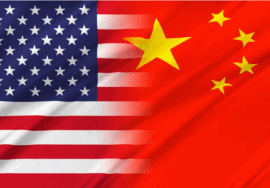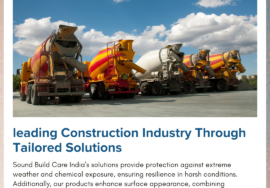Choosing the Right Protective Workwear
[ad_1]
A safe working environment for employees is the paramount concern for manufacturing facility managers and owners. Proper training ensures each employee knows how to perform their tasks without putting themselves and others at risk. Equally important is outfitting workers with high-quality protective workwear that helps minimize on-the-job injuries. Protective attire also keeps your facility compliant with Occupational Safety and Health Administration (OSHA) regulations.
What is the different protective clothing on the market? What qualities should you look for in protective wear for the manufacturing industry? Find out the answers to these and more questions below.
Types of protective clothing include:
- Flame-Resistant: Flame-resistant clothing goes over the worker’s uniform. The gear is useful in areas with open flames and other fire hazards.This type of workwear protects your employees against fire and heat to a certain level. However, you can’t depend entirely on fire-retardant gear. Use the clothing with rubber gloves and aprons to prevent harmful exposure to industrial chemicals.
- High-Visibility: High-visibility protective workwear makes the employee more visible. Low-visibility is a big concern, often leading to casualties. So, it is critical to wear highly visible pants, jackets, pants, coveralls, and other apparel. Bright lighting makes manufacturing facilities safe, especially where sight is critical to prevent accidents. Employees should wear high-viz workwear when the light conditions at your facility are not at acceptable levels.
Factors to Consider When Selecting Protective Workwear
Consider these essential factors when choosing which protective workwear is right for your manufacturing facility.
- Consider the threat level of the task your employee is completing. If the employee is working with heavy annealed glass, you require high-level protective gear. A half-inch annealed glass poses a serious threat to employees, so they are required to wear with high-level cut protection. There is less risk of fatal accidents when employees work with quarter-inch tempered glass. Level four or five workwear is sufficient for your workers. Assessing the threat level helps you choose the correct gear. So, the higher the threat level, the higher the protection level.
- Injuries from vehicles, such as trucks and forklifts, are common in warehouses and factories, and they should be a factor when choosing protective workwear for your employees. Workers should wear clothing with a class 3 Hi-Visibility tape when working around vehicles and in low-light conditions. For example, people working in American airports should wear a hi-visibility reflective tape over 300 square inches. The material reflects light from headlights, so the wearer is visible to avoid injuries and save lives.
- The industry you are serving affects the workwear you choose. No tool does it all, so choose protection wear for employees carefully. For example, some clothing comes with wire in the yarn, which may be fatal for employees working around electricity or near electrical threats. Also, the clothing should have High-Performance Polyethylene (HPPE) when employees are working near fire threats. Extra padding on the sides and arms protects from physical blows likely to occur on the job. Industries with special requirements are likely to have protective workwear that meets them.
- The climate your employees are working in is another critical factor to consider. Wear that is too heavy for hot environments increases the chances of fatigue and accidents occurring. Workwear too light for cold climates may make workers uncomfortable, impairing coordination and leading to decreased production because of injuries. You get many options in a climate-controlled environment. Pullovers are the go-to workwear in climate-controlled facilities since they do not have loose ends or dangling zippers like to interfere.
- Also, consider your company culture of safe behavior. The hardest thing to change in any organization is culture or human behavior. When employees constantly forget to zip jackets or wear protective clothing, consider pullovers. Jackets are acceptable as long as you have a safety-conscious team that follows the rules. After all, nobody wants to act as the safety cop walking around and reminding everyone to zip up the entire day.
Focus on Comfort and Safety Balance
A significant contentious issue is finding the balance between safety and comfort when buying protective clothing. People want to be comfortable when working. An uncomfortable experience increases the chances of accidents, and work morale drops. However, make sure you are not overcompensating and purchasing wear with a higher safety rating than you require. High-rated protective gear can be heavy, which fatigues employees and may be too uncomfortable and stiff for them to do their job efficiently.
Assess the threat level of each task in your manufacturing facility and choose the best equipment to cover the employee doing it to find the right balance. Remember, do not go overboard.
The most overlooked factor when selecting protective workwear is ensuring it fits each employee. Loose clothing can help workers doing manual labor stay comfortable. However, these baggy clothes are also easy to catch in machines and passing vehicles, with disastrous results. Instead, make sure you consider the size and fitting of protective workwear. Clothing does not have to be form-fitting, but it should not also be baggy.
Remember to consider the neck size when the employee works around sharp objects like glass. Collars will help cover the entire neck in such cases. This coverage can help save lives.
There are several factors to consider when selecting the right protective workwear for a manufacturing facility. Your industry, sizing, comfort, vehicles, climate, and threat level all influence your decision. However, always go for quality and durable clothing. Following these tips will help ensure your employees are safe and make your workplace safer.
[ad_2]
Source link










